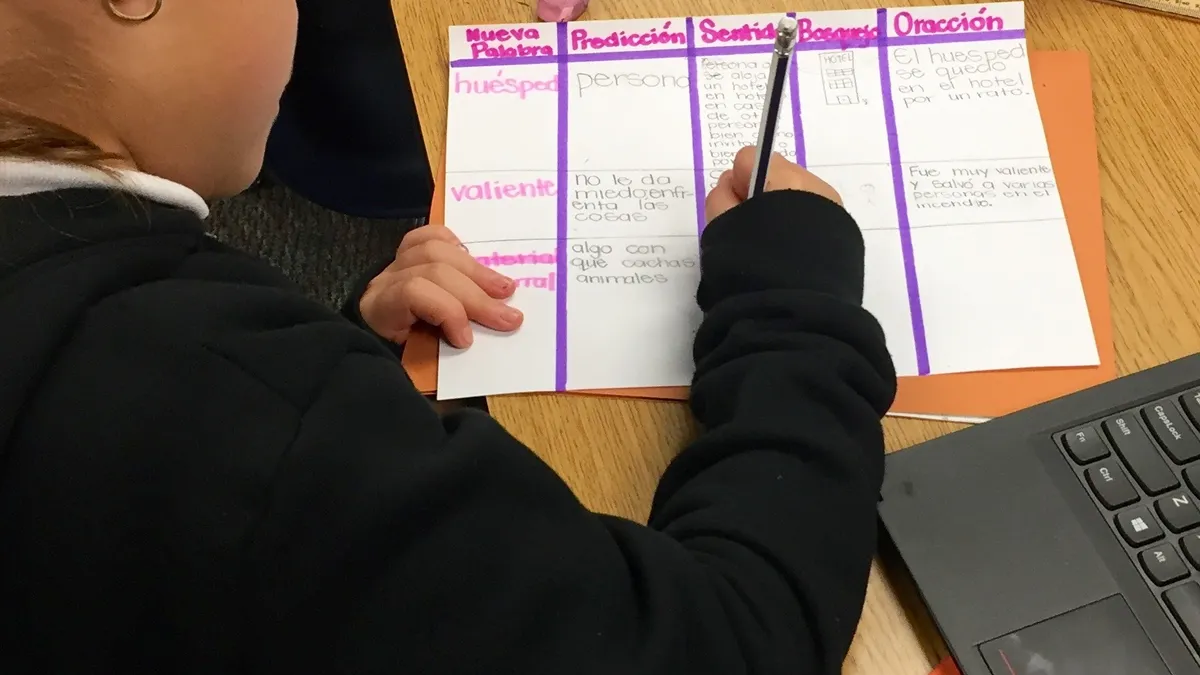Dive Brief:
- Californians Together, a non-profit advocating for equitable education for English learners, reviewed 41 California school districts' learning continuity and attendance plans and found most did not include a plan for educational continuity, meaning there was little evidence of the amount of guaranteed daily live instruction time for ELs and their prioritization in in-person learning plans. (The state of California has 1,037 districts total.)
- Nearly 40% had weak plans in place to assess and monitor EL progress, collaborate with families, and offer professional development for teachers and instructional support staff, according to the report. Nearly half (49%) did not differentiate between different English language learners and their instructional needs, and more than two-thirds had weak plans for SEL and mental health supports for ELs.
- Overall, the report found "districts and schools can do significantly more to support ELs, their families, and their teachers."
Dive Insight:
Districts in California were required to have Local Control and Accountability Plans, or three-year plans outlining goals, actions, services and expenditures to support positive student outcomes. Due to COVID-19, LCAPs were replaced for the 2020-21 school year with Learning Continuity and Attendance Plans, which are meant to provide information about how districts invested state resources and instruction to address student learning.
Researchers Conor Williams, a fellow at progressive think tank Century Foundation, and Manuel Buenrostro, a policy associate for Californians Together, outlined places of improvement for districts, including:
- Conducting linguistically and culturally competent outreach.
- Engaging families.
- Addressing learning loss, including evaluation of attendance strategies' effectiveness and supports for 1st-grade students who did not attend kindergarten in the 2021-22 school year.
- Professional development for cultural proficiency and competencies, as well as SEL and mental health strategies.
- Staff hiring and placement to support at-risk students.
- Implementing and delivering high-quality EL curriculum.
- Targeted strategies to meet needs of various ELs with differentiated growth targets and supports.
While it is the goal of many districts to get EL students back on track in their learning and engage students and their families, many also face hurdles. For example, districts are still struggling with assessing EL students despite flexibilities granted by the federal government. Specifically, districts have struggled to coordinate staff time, student transportation, adjustments in class schedules, pandemic precautions and other factors to conduct in-person, multi-day EL proficiency assessments.
These obstacles could mean fewer students assessed and unreliable data collection, which could make personalized learning and instructional planning, often informed by assessment outcomes and data, for this student group even more challenging.
In addition to language barriers, data shows non-English-speaking students were already behind their English-proficient peers academically before the pandemic hit. These students also are more likely to live in homes without devices or reliable internet access, struggle with food insecurity, have unstable home environments or have working parents who are unable to assist their children with remote learning during the school day.
Those that have put guardrails in place for English learners are employing a variety of methods. For example, Azusa Unified School District in Los Angeles County, California, had its EL students attend language development classes 45 minutes before and after the regular school day so they don’t miss instructional time in their regular academic courses. The students were also prioritized to return to campus for one-on-one assessments.
Various local associations and organizations like the National Association of English Learner Program Administrators provide training to serve the EL population, as well.
"Districts have made progress toward digital inclusion and accessibility, but there are still many inequalities to address—these inequities will only worsen without meaningful commitments from educators and district leadership,” said Martha Hernández, executive director of Californians Together, in a press release.













